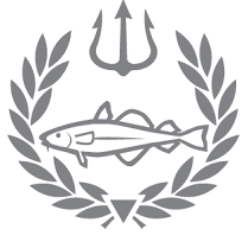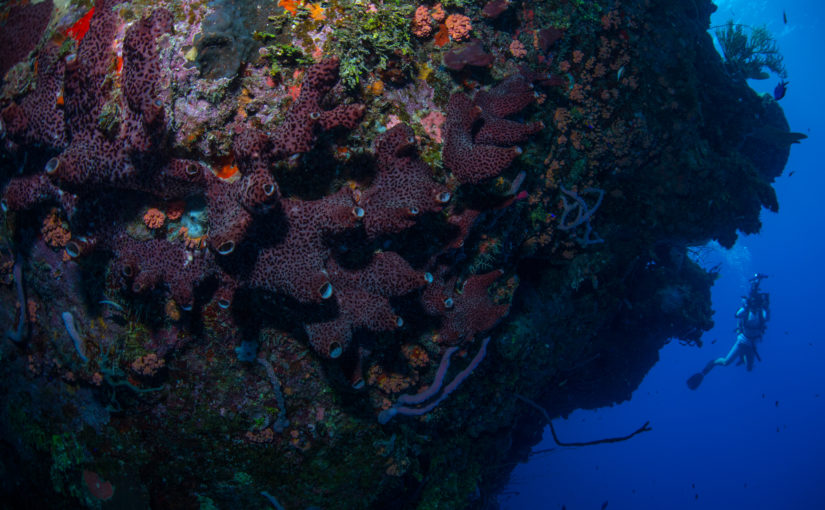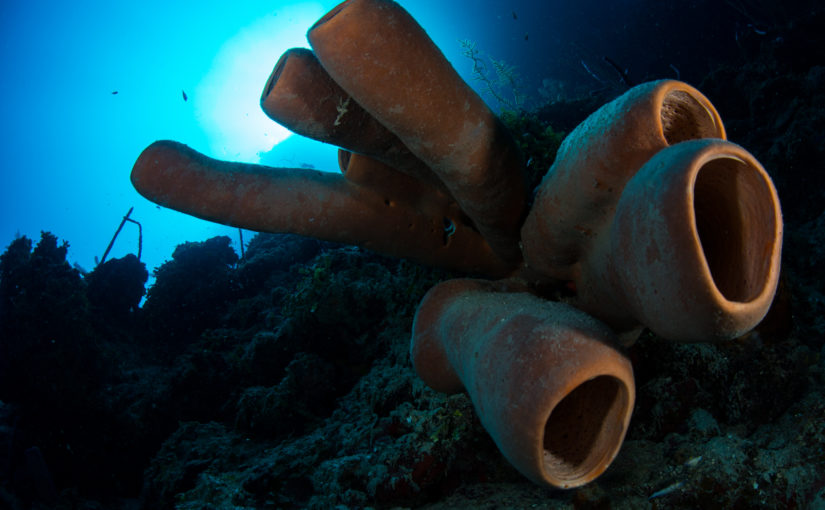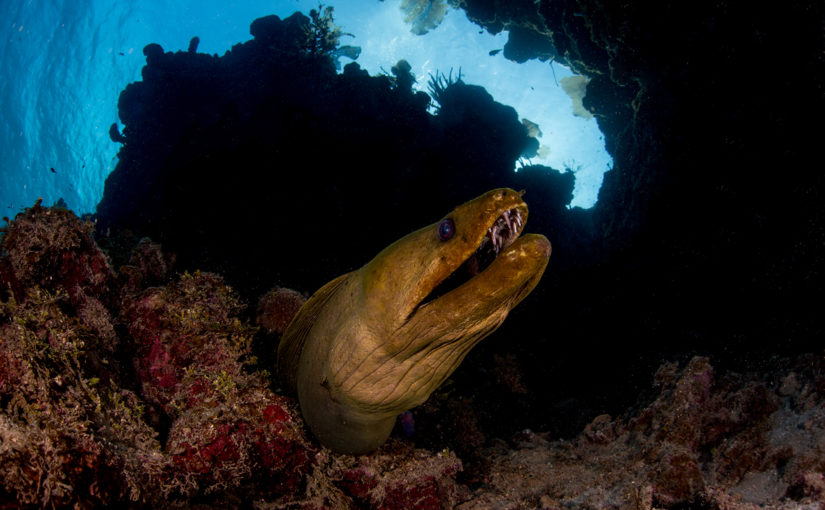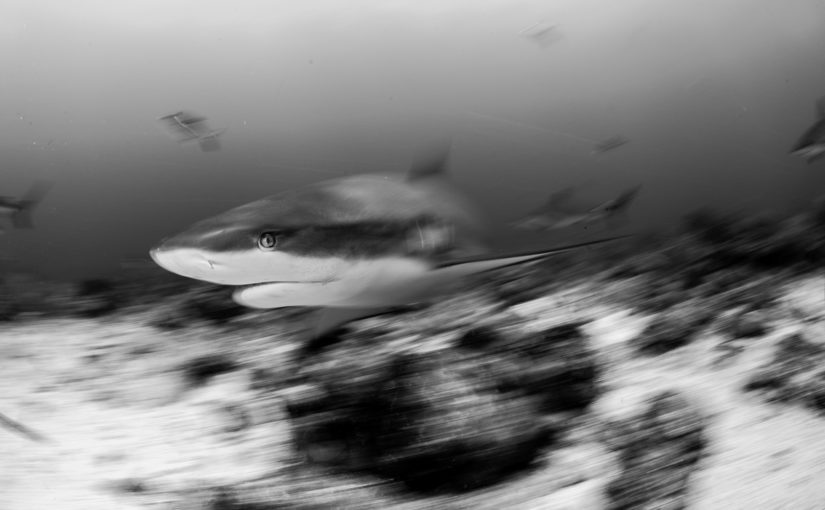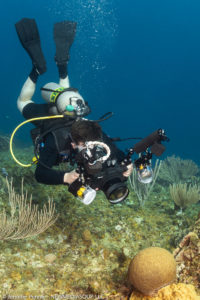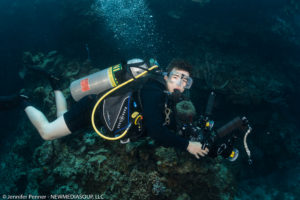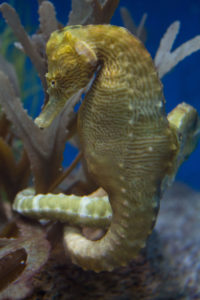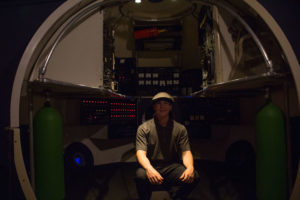My last dive in Roatan was with Cristian Dimitrius, a filmmaker for National Geographic and BBC who filmed Wild Brazil, he has presented at the Sea Rovers clinic in the past. He came part way through the week from shooting on assignment. I went to his classroom presentation about visual storytelling where he showed us work that he has done in the Amazon and how he creates a story. I showed Cristian some of my shots that I had gotten and he asked what boat I was on so he could come on the same boat. Well I reluctantly told him I didn’t do the boat dives because I kept getting sea sick and that the shore dives were just as good if not better. The next morning at breakfast Cristian asked if I wanted to go on a dive, and of course I said yes! We geared up heading into the water, I asked where he wanted to go and he said I could lead the dive, so I said we should go to Coco View Wall of course. I was hoping to find my moray friend so that Cristian could get some good video. To my suprise Cristian shot me on the most of the dive. With his massive video camera and Keldan lights he directed me to swim certain places and shot certain things. As we got to the corner in the wall I found the moray and pointed it out to Christian who began to shoot it and me shooting it. We continued on photographing and filming then headed back after a while. Cristian made a short film of the dive called “Jake’s Reef”. I was amazed at how fast he put together the footage and how he made me look like an actual diver! My last dive in Roatan was probably the best, it was a honor to dive with Cristian.
